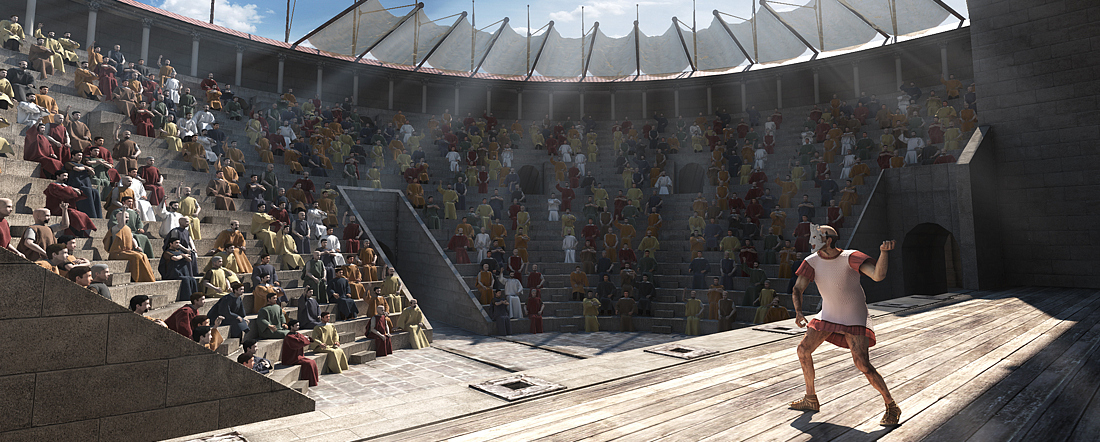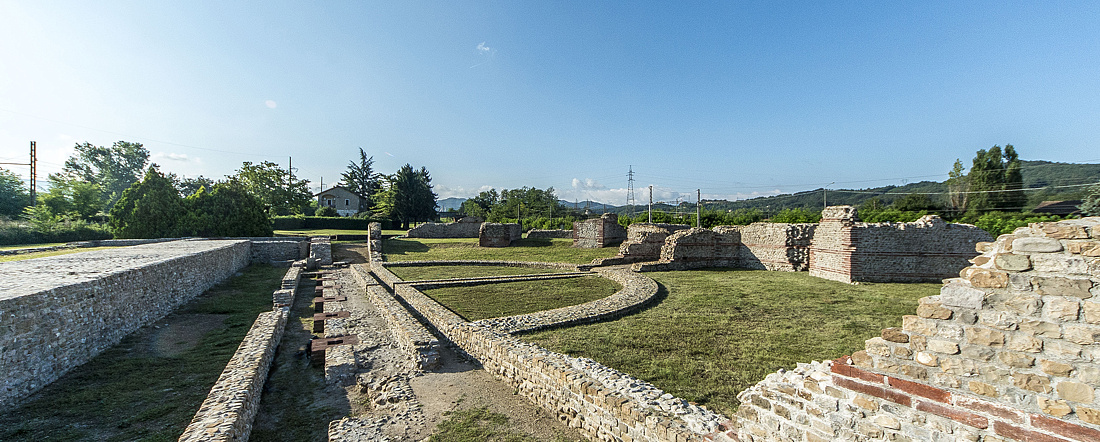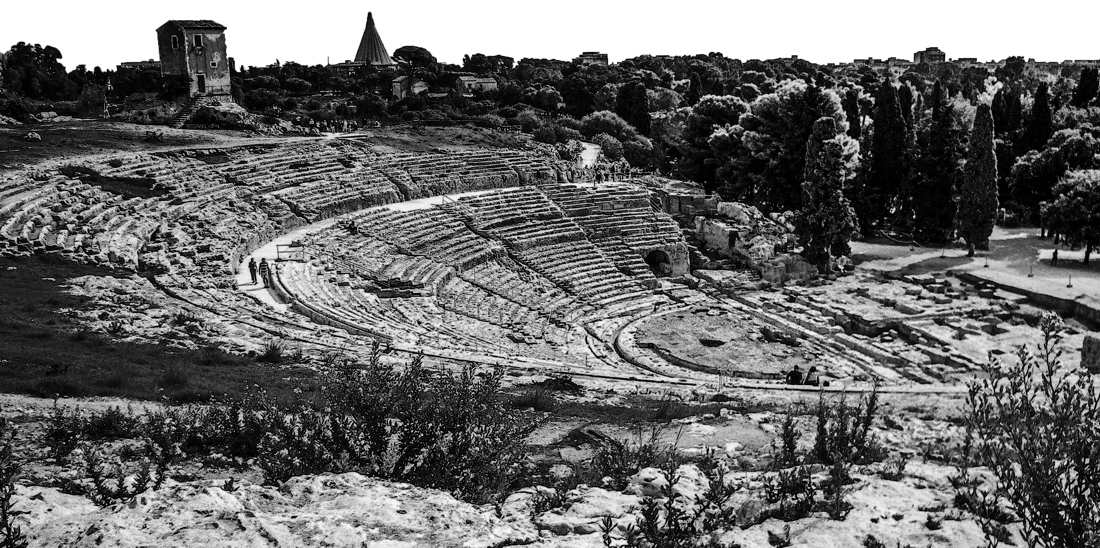
The Theatre
The theatre was a semi-circular building in which tragedies, comedies and other ancient forms of entertainment were performed.
The theatre of Libarna is dated to the first century AD. The building was located in the north-western part of the urban area. Our understanding of the building and its monumental nature is now limited because the original excavations were carried out at a time when the main interest was simply in bringing to light the monuments; and because the structure has been much damaged by the activities of farmers and by the construction of two railway lines. Nevertheless, the theatre must have been outstanding both in terms of its architecture and its decoration, as is revealed by the finds of decorated architectural elements, precious marble revetments, and painted plaster.
The crucial parts of the theatre were made of concrete that was faced with small stone blocks and with courses of brick. The building was probably designed on two levels: an external ambulatory with twenty-two arches supported by pillars on sandstone bases and an upper order that was probably blind, without openings.
There was a central, main entrance, flanked by two side entrances, and four secondary entrances at the ends of the radial corridors giving access to staircases.
In the interior, the cavea and scaena formed a single, unified block, which allowed for excellent acoustics. In front of the orchestra, that is the semi-circular space between the steps and the stage (originally intended for the chorus’ performances), the holes that housed the lifting mechanisms for the curtain can still be seen in the foundations of the stage.
As was usual, at the back of the stage building there was a porticoed garden (porticus post scaenam), probably with a fountain in the middle. Here the spectators could walk between one show and the next.
The theatre could host several hundred spectators.

Finds
The theatre buildings in the Roman era
The Roman theatre derived from the Greek model, but with substantial differences. The construction of the theatre in Greece took advantage of the nature of the terrain, and the auditorium was therefore built into a hill, thus looking out theatrically on the surrounding landscape. In the Roman world, however, the theatre relied on a freestanding structure built entirely in masonry (even though it sometimes took partial advantage of the natural slope of the hill) in a single unit, closed at the back. Indeed the back wall of the stage (scaenae frons), punctuated by ornamental columns, had a length equal to the outer diameter of the cavea and the same height; the side entrances, which were covered, were set below the cavea, which itself was thus connected to the side rooms of the stage building.
The basic components of the Roman theatre were the cavea, scaenae frons (front of the stage building) and the proscaenium (namely, a true stage). The semi-circular orchestra, present in the Greek theatre, had lost its function.
The history of the theatre, as a permanent architectural building, is more recent than that of theatre performances, which, as we know, were widespread in Rome from the end of the third century BC,
when our sources attest that the comedies by Plautus were performed in the forum and temporary installations of wood and cloth were used.
The tradition of removable theatres lasted for a long time in the Urbs, actually until 55 BC, when the first permanent building made of stone was opened, the Theatre of Pompey. This monument is no longer directly visible, but its curved plan can be recognized in the large block just South of Campo dei Fiori. The other large building for performances built a few decades later in Rome, the Theatre of Marcellus, however, survives at least partially. Opened around 13-11 BC and dedicated to Augustus’ nephew, who died prematurely, this building had a curved façade of travertine blocks, characterized by three superimposed orders of arches. It was provided with semi-annular service corridors and a rectilinear stage building, richly adorned. The Theatre of Marcellus worked as a model for the spread of a scheme that was very successful throughout the Roman world.



 Italiano
Italiano Français
Français


